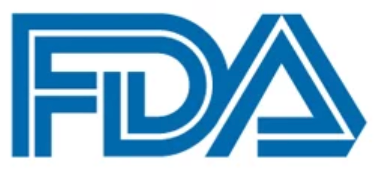Article
FDA Grants PTC596 Multiple Designations for Leiomyosarcoma, Glioma
Author(s):
November 18, 2020 - The FDA has granted a fast track designation and an orphan drug designation to the orally bioavailable small molecule tubulin-binding agent PTC596 for potential use in patients with leiomyosarcoma; the agent also received a rare pediatric disease designation and an orphan drug designation for potential use in patients with diffuse intrinsic pontine glioma.

The FDA has granted a fast track designation and an orphan drug designation to the orally bioavailable small molecule tubulin-binding agent PTC596 for potential use in patients with leiomyosarcoma; the agent also received a rare pediatric disease designation and an orphan drug designation for potential use in patients with diffuse intrinsic pontine glioma (DIPG).
“We are very pleased with the FDA’s decisions to grant PTC596 these designations,” Stuart W. Peltz, PhD, chief executive officer at PTC Therapeutics, stated in a press release. “This brings us one step closer to providing truly novel therapeutic approaches to patients with devastating rare cancers seen in children and adults that do not have good treatment options.”
PTC596 is a small molecule that targets cancer stem cell populations by diminishing the function, activity, and amount of BMI1. The agent was designed to modify and eliminate the BMI1 protein through phosphorylation.2 In several tumor cell lines, the agent has been shown to effectively inhibit BMI1 function. In vitro, the agent has also been found to preferentially target cancer stem cells that were resistant to chemotherapy.
In animal cancer models that utilized human tumors, PTC596 was found to effectively control the disease and reduce the size of the tumor when delivered orally on a weekly basis. Moreover, although this agent and paclitaxel were both found to be able to control cancer growth, the former was also found to lead to a reduction in BMI1 levels, which suggests that it decreases the number of cancer stem cells. The agent was also determined to be well tolerated in these models.
In a phase 1, multicenter, dose-escalation trial, PTC596 was evaluated in patients with advanced solid tumors. Patients received the agent as an oral monotherapy in 4-week cycles using a twice-weekly dosing schedule based on body weight.3 Although the maximum-tolerated dose was not determined, a recommended phase 2 dose of 7 mg/kg biweekly dose was established. With regard to safety, patients reported neutropenia, nausea, and vomiting; these toxicities were determined to range from mild to moderate in severity and were found to be both manageable and reversible.4
PTC596 in currently under investigation in a phase 1 trial (NCT03761095) examining its use in combination with dacarbazine in patients with advanced leiomyosarcoma. The primary objective of this research is to identify the maximum-tolerated dose of the agent, along with the recommended phase 2 dose, when used in combination with dacarbazine; another focus is to identify the toxicity profile of the agent in this regimen.4
In order to be eligible for participation, patients had to have histological or cytological confirmation of disease arising at any anatomic site, advanced or locally advanced unresectable disease, a disease status that made them ineligible for other high-priority national or institutional studies, and measurable disease per RECIST v1.1 criteria.5 Patients also needed to have an ECOG performance status of 0 or 1, among other criteria.
PTC596 is also under evaluation in a phase 1 trial (NCT03605550) evaluating its use in children with newly diagnosed DIPG and high-grade glioma.6,7 The objective of this research is to identify the safety profile of the drug when administered during radiation treatment. Other areas of focus include the impact or effects of the agent on children and young adults with brain tumors.
To be eligible for inclusion, patients must have a diagnosis of high-grade glioma and they must be scheduled to receive radiation as a treatment for their disease. The trial is being conducted in 2 parts. The objective of the first portion of the trial (part A) is to determine a safe dose of the agent to be administered in combination with radiation followed by maintenance therapy with PTC596 in this patient population.
In the second portion of the research (part B), a surgical cohort will be enrolled to the trial; this cohort will be comprised of patients with newly diagnosed DIPG who are candidates for biopsy based on the recommendation of their treating physician, or with those are newly diagnosed high-grade glioma who require a second surgical resection for additional debulking or to achieve a near-total or gross total resection following initial diagnosis of disease, but before treatment has been initiated.
For part 1, pharmacokinetic samples will be collected on days 1 and 4, correlating with doses 1 and 2, of cycle 1 and day 1 of cycle 2. The agent will be given twice weekly on Monday and Thursday or Thursday and Friday for a duration of 6 to 7 weeks, while receiving daily radiation treatment. Once this treatment is completed, the investigational agent will be continued in patients as maintenance therapy; this will immediately be given after radiation therapy for up to 25 treatment cycles.
For part 2, investigators will evaluate the ability of the experimental agent to inhibit BMI-1 in both the tumor and peripheral blood mononuclear cells in patients with newly diagnosed DIPG or high-grade glioma. Here, the pharmacokinetics of the drug in plasma, cerebrospinal fluid, and tumor tissue will be further assessed.
Those enrolled to the surgical cohort, will receive 2 doses of the agent on days 1 and 4 of the surgical cycle before biopsy or re-resection. The second dose of PTC596 should be given 3-6 hours prior to surgery but could be given up to 12 hours before the procedure. Investigators will measure the concentration of the drug in the tumor and a blood sample through mass spectrometry. Moreover, BMI-1 expression and the effects of this inhibition on gene regulation will be evaluated in these patients through the use of gene expression profiling. Epigenetic analyses will be performed in tissue and plasma samples. This cycle will end when patients begin radiation treatment.
Patients will begin radiation treatment at least 2 weeks following their procedure and may restart the investigational agent on Mondays and Tuesdays or Tuesdays and Fridays twice weekly following the initiation of radiation treatment.
References
- PTC Therapeutics announces key regulatory designations for PTC596 to advance treatment of two rare oncology indications. News release. https://bit.ly/2Hc3WNI.
- Additional areas. PTC Therapeutics website. https://bit.ly/2IKB2Vs. Accessed November 18, 2020.
- PTC596 in patients with advanced solid tumors. ClinicalTrials.gov. Updated December 8, 2017. Accessed November 18, 2020. https://clinicaltrials.gov/ct2/show/NCT02404480.
- Weetall M, Branstrom A, Baird J, et al. PTC596 combination therapy for sarcoma. Cancer Res. 2019;79(suppl 13). doi:10.1158/1538-7445.AM2019-292
- A study of PTC596 in combination with dacarbazine in participants with advanced leiomyosarcoma (LMS). ClinicalTrials.gov. Updated October 30, 2020. Accessed November 18, 2020. https://clinicaltrials.gov/ct2/show/NCT03761095.
- A phase 1b study of PTC596 in children with newly diagnosed diffuse intrinsic pontine glioma and high grade glioma. ClinicalTrials.gov. Updated November 5, 2020. Accessed November 18, 2020. https://clinicaltrials.gov/ct2/show/NCT03605550.
- CONNECT1702: a phase 1b study of PTC596 in children with newly diagnosed diffuse intrinsic pontine glioma and high grade glioma. Cincinnati Children’s. Accessed November 18, 2020. https://bit.ly/3pFEy4h.









